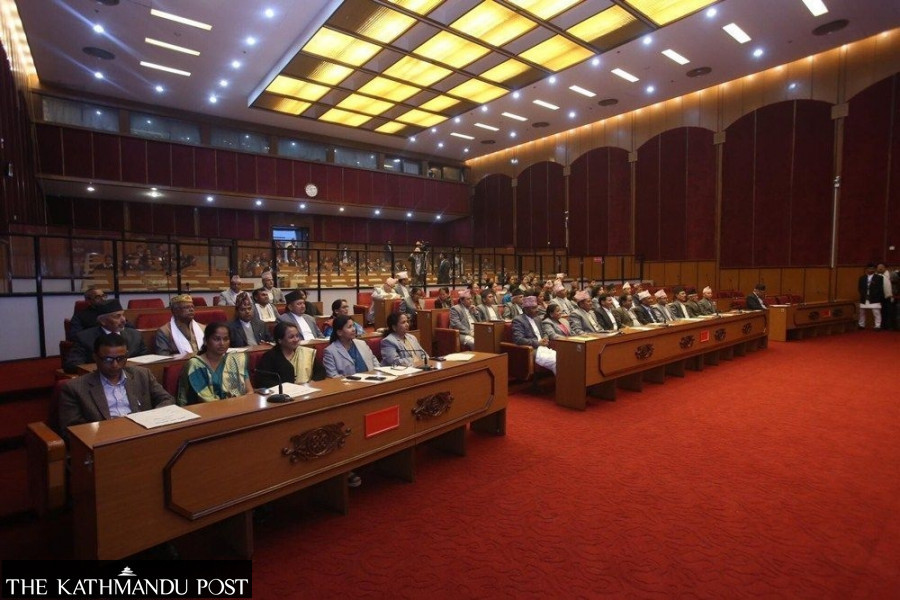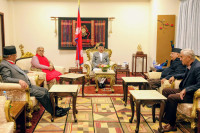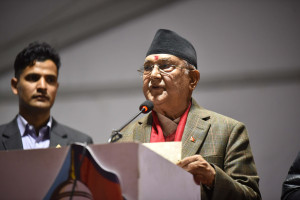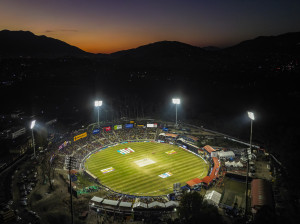Editorial
Choose wise
The next set of members who enter the National Assembly will be a sign of the mindset of big parties.
Major political parties are supposedly gearing up for 'Mission 2027’, the year of the next general elections. One would think that it is too early to think four years down Nepal’s bumpy political road. But the same parties are also quietly preparing for elections to the National Assembly. The Election Commission has scheduled the vote for January 25 to fill a third of the 59 upper house seats that will be vacated on March 3.
Nepal has a bicameral legislature comprising the lower House of Representatives and the National Assembly, the upper house. Constitutionally, members and officials in these state organs are to be elected, appointed or recruited based on an inclusive principle. Moreover, the upper house is envisioned as an institution that ensures the representation of even the smallest communities and groups that are not adequately represented in the lower chamber. Therefore, election of at least one woman, one Dalit and one member either from disabled or marginalised communities from each province is mandatory in the upper house.
Notably, Nepal's upper house has a good history of representation, at least in leadership positions. In July 1959, Kamal Rana, a woman, was elected the vice-chair of the National Assembly, in the first parliament of the country. After restoration of multi-party democracy in 1990, Nepal gave continuity to the bicameral parliamentary system. Again, the upper house elected chair and vice-chair from among marginalised and underprivileged communities. For instance, Dr Mohammad Mohsin, a Muslim, led the house as chair for two terms starting 1999 and Ramprit Paswan, a leader from an underprivileged Madheshi community, became the chamber’s vice-chair in 2001.
Internationally, the upper house is also seen as a place for experts in different fields who can keep themselves above petty politics, even as the lower house members might be more influenced by their political allegiance and electoral constituency. The upper house maintains a check on and enriches the work of the lower house. As members of the chamber don't engage in making and unmaking governments, they can work more independently on legislative agendas and thematic areas, and in the larger national interest. Therefore, while selecting members for the upper house their expertise in particular sectors are vital. Even in Nepal, members who have been appointed to the National Assembly based on their expertise have proven their worth.
Among the 20 members retiring this time is Ganesh Prasad Timilsina, upper house chair. This is why there is heightened interest in the upcoming election. Crucially, the National Assembly chair is also an ex-officio member of the six-member Constitutional Council which recommends candidates for constitutional bodies as well as the chief justice. There is why there is a lot of tussle within the ruling coalition on who occupies this vital position next.
Whoever they pick, they would do well to honour the position by choosing someone from a marginalised community and with a high level of integrity—and there is no shortage of candidates with this strong combo. The same rules apply to electing other National Assembly members. One after another, our state institutions have been hobbled by dominance of people from a particular background, political meddling and open interference from the executive. The upper house has been somewhat of an exception, even though there have been plenty of anomalies there as well. In this larger context, the next set of members who enter the chamber will give a clear indication of whether the dominant political forces in the country are status quoists or real agents of change.




 19.12°C Kathmandu
19.12°C Kathmandu














